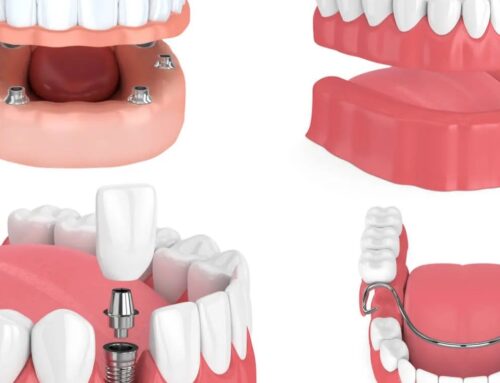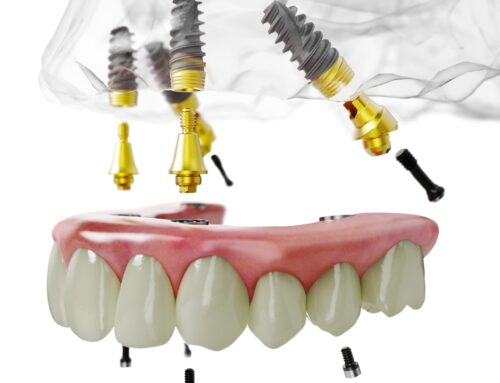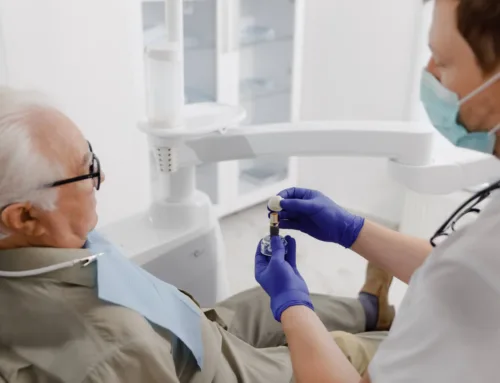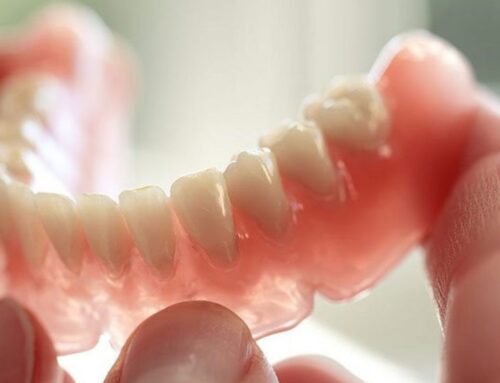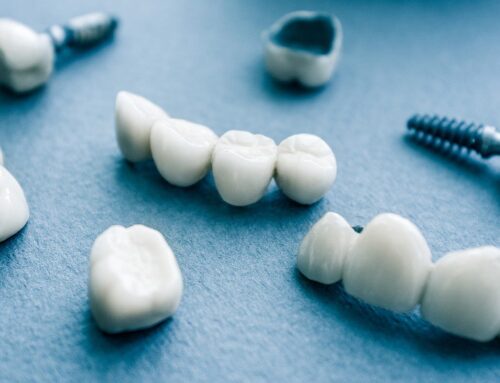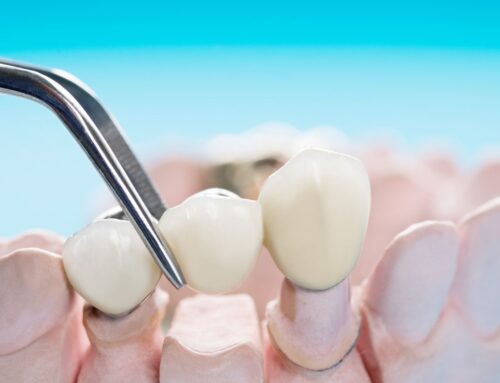Comparing Crowns and Dental Implants
When it comes to restorative dental work, there are a few different methods that have been developed by dental surgeons in order to provide the results that patients want to see in their smiles. Sometimes a completely new tooth, all the way from the root to the cap, is needed in order to properly correct the problem.
Other times, when most of the existing tooth is healthy and strong enough, it may make more sense to simply replace the damaged or decayed portion to effectively restore the desired appearance and function of the tooth.
Depending on the unique needs of the patient, dentists will typically choose from one of two common procedures in the event that the damage or decay of the tooth is sufficient enough to not be solved by a simple filling. These two methods of tooth repair are known as dental crowns and dental implants, and they are both used to restore the form and function of your mouth to a more natural state. But which one is really the best approach for you? Crowns and implants use very different approaches to solving the problem of a damaged or decaying tooth, and in this article, we will explain the differences between them and some of the situations in which each method produces the best results.
First, let’s look at crowns as a restorative dental care option, and how they work to repair the appearance and functionality of your tooth.
What are Crowns?
While it may seem at first glance like our teeth are all one piece, the reality is that they have different components and parts just like any other part of our bodies. Generally, the parts of a tooth are grouped in to two main sections, namely the root and the crown. The root of a tooth is the portion that is not visible and anchors the tooth within our jawbones and gum tissue. The part of the tooth that you can visibly see inside your mouth is called the crown. Restorative crowns are essentially replicas of your tooth made from a synthetic material and are designed to fit on top of your existing tooth.
Before a crown can be attached, the damaged or decayed portion of your natural tooth will be filed down to remove the affected tooth material and provide a clean surface for the crown to sit on. The crown is then affixed to the remaining natural tooth using a permanent dental adhesive. Restorative crowns are shaped and coloured to precisely match your natural teeth, so that there is virtually no visible difference between the synthetic tooth and your other teeth.
When are crowns the best choice?
Crowns are an effective solution to a variety of different types of dental issues and offer many advantages. While fillings are ideal solutions to small cavities, they are not always the best choice for larger cavities or teeth that have been physically damaged or chipped as a result of an accident or impact. In cases where the root, gums, bone, and surrounding area of the tooth are still healthy, a crown is generally preferred since it does not require the removal of the entire affected tooth or any invasive oral surgery.
Overall, for instances where the damage or decay is limited and localized to a single tooth, and exists on the visible portion of the tooth, a restorative crown is an effective solution to fix the problem and return the mouth to full function and a very natural appearance.
Now, let’s take a look at dental implants, and explore how they work and the advantages they provide.
What are Dental Implants?
Sometimes the damage to a tooth goes beyond simply the visible surface and extends down in to the root of the tooth, which if left untreated can result in the complete loss of the tooth and damage to the surrounding bone, gums, and tissue. Simply replacing the crown of a tooth in this instance will not solve the underlying problem and therefore a full restorative dental implant will likely be recommended.
Dental implants are essentially complete replacement teeth from the root to the crown, that are securely anchored in place within the jawbone. Dental implants consist of two pieces, an anchor and a crown. The anchors are typically made from a metal or composite dental material that performs the function of the root of the tooth. These materials are commonly titanium or zirconium, which are effective at fusing with the bone in the jaw resulting in a very secure, permanent connection. The visible portion of the dental implant is formed in much the same way as a crown using a synthetic dental material. Since this portion of the dental implant will be visible in your mouth, it is shaped and coloured just like a crown would be in order to correctly match your existing teeth, resulting in a very natural appearance.
When are dental implants the best choice?
In the event that your dentist discovers that the damage or decay of the tooth extends beyond the visible crown of the tooth and down in to the root, they will likely recommend a restorative dental implant as a solution instead of a crown. Other instances where an implant is the best solution is accidents that result in a completely missing tooth, or in cases where the risk of bone loss from alternative tooth replacement methods is too great. Since the dental implant is affixed directly to the bone of the jaw, there is a far lesser risk of bone degradation when compared to some styles of bridge or dentures that are affixed only to the gums or other teeth.
In summary, dental implants are the desired solution for restorative dental work when a whole tooth is either missing or must be removed. Dental implants allow for a complete replacement of the affected tooth in a way that avoids the potential risks of bone loss and provides a permanent, natural looking solution for these patients. Restorative dental implants are also the preferred method for replacing multiple damaged teeth, whereas crowns may simply not be a viable option for certain types of patients in need of more extensive restorative dental work.
Conclusion
Before any determination can be made on which option is the best choice for your situation, a complete and thorough dental exam must be completed, including a full review of your dental health records and history. Your dentist will want to be sure that the procedure that is selected is the most suitable for your needs and will deliver the best possible end results for you. They will discuss with you the various pros and cons of the different procedures specifically as they relate to your dental health history and your desired outcome.
In order to begin the process of restoring your mouth to full function and a natural looking smile, you will need to arrange for your free consultation with the team of experts here at Georgian Dental®. We will make arrangements to perform your exam and walk you through all the different options that you have available to achieve your goals. Our dentists are eager to help you get your smile back in style and are dedicated to providing you with the absolute best in dental restoration techniques.
Appointment Request
If you’re interested in any of our procedures, and would like to meet with one of our dentists to discuss options, costs and get additional information, complete this short form and we’ll give you a call to arrange for a no-obligation appointment at our Barrie clinic.
